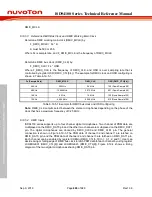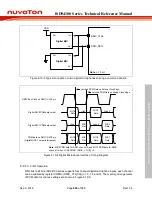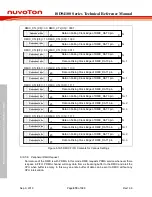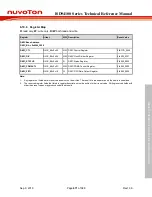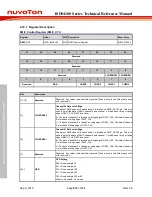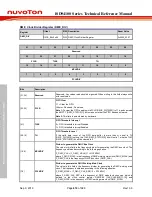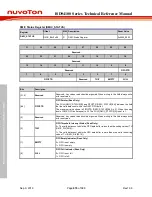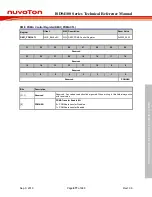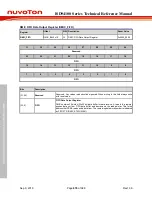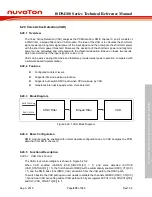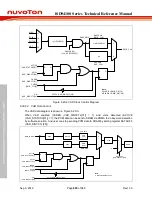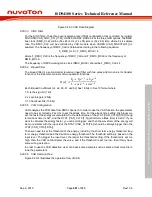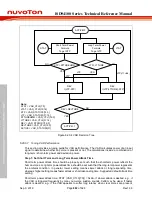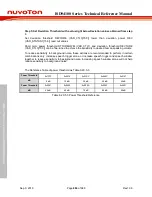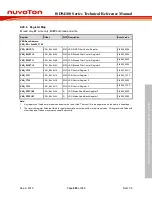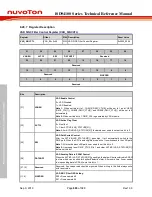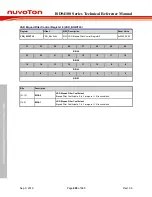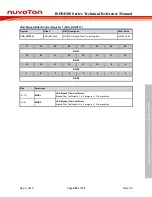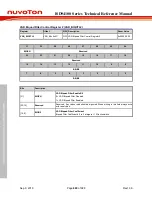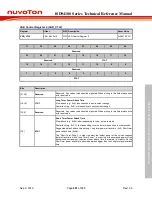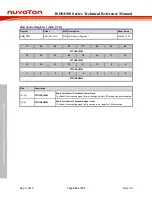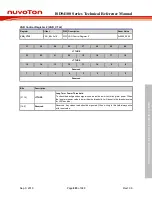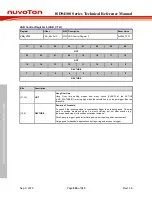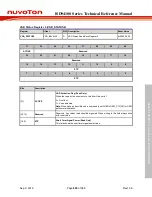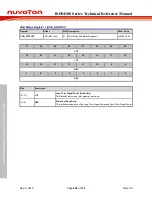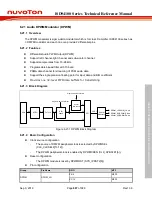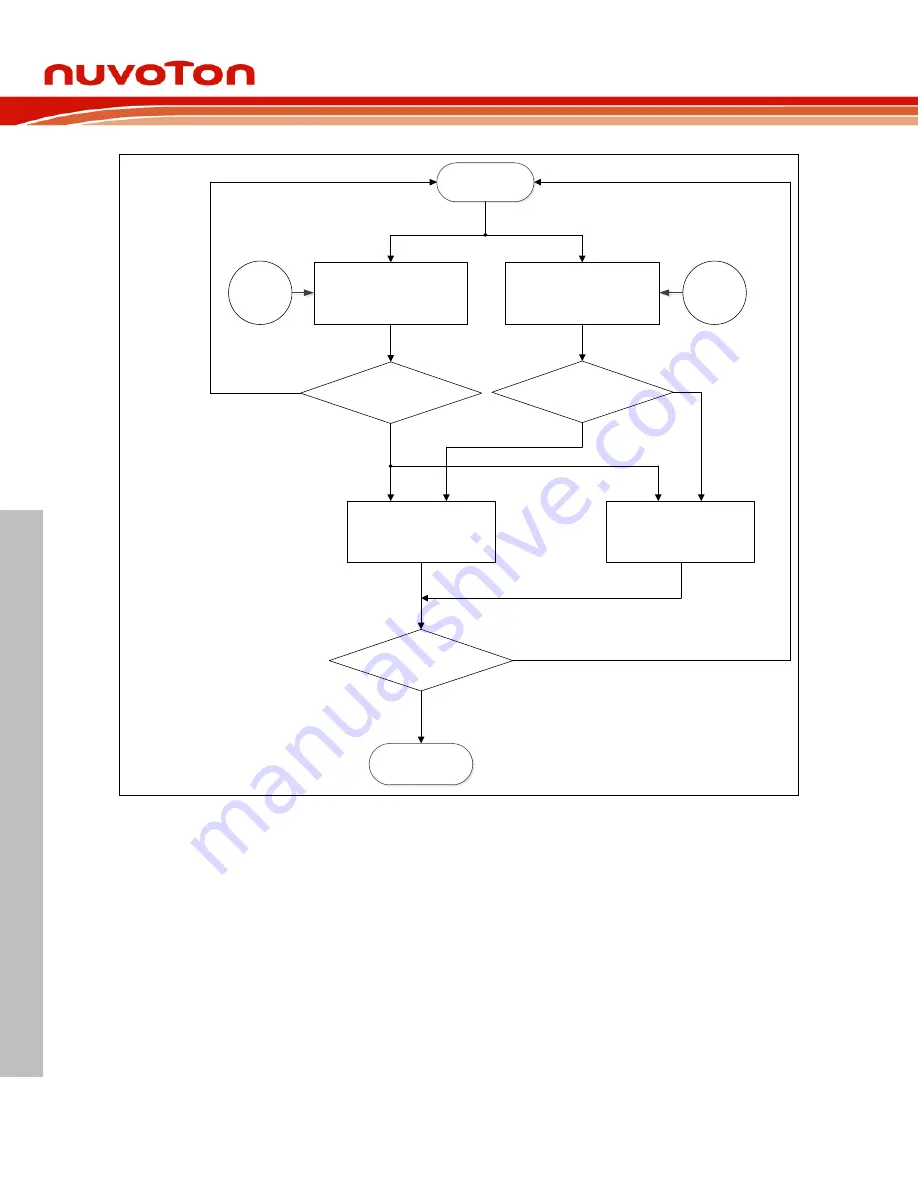
ISD94100 Series Technical Reference Manual
Sep 9, 2019
Page
882
of 928
Rev1.09
IS
D
9
410
0
S
ER
IE
S
T
E
C
HN
ICA
L
RE
F
E
RE
NCE
M
AN
U
AL
YES
NO
ACTIVE=1
ACTIVE=0
NO
YES
LTP
(LTTHRE)
LTP
YES
NO
STAT = VAD_CTL0[7:0]
LTAT = VAD_CTL0[19:16]
STP = VAD_STATUS0[15:0]
LTP = VAD_STATUS1[31:16]
STTHREHWM = VAD_CTL1[15:0]
LTTHRE = VAD_CTL2[31:16]
DEV = VAD_STATUS1[15:0]
DEVTHRE = VAD_CTL3[15:0]
ACTIVE = VAD_STATUS0[31]
STP
STAT
DEV
=|LTP(LTTHRE)-STP|
Short Term Power
Formula
To get STP
Long Term Power
Formula
To get LTP
STP >STTHREHWM
DEV >DEVTHRE
DEV
=|LTP-STP|
LTAT
LTP> LTTHRE
Note:
Figure 6.20-4 VAD Decision Tree
6.20.5.7 Tuning VAD Performance
This section provides a tuning guide for VAD performance. The VAD calculates power of an input
signal to determine whether any voice is present or not. The calculations include a combination of
long-term / short-term power and deviation power.
Step 1: Set Short Term and Long Term Power Attack Time
Short term power attack time should be properly set such that the short-term power reflects the
human voices. Long term power attack time should be set such that the long-term power represents
the ambient condition. In general, lower setting means slower attack or long responding time;
whereas higher setting means faster attack or short responding time. Suggested default attack time
setting:
Short term power attack time: STAT (VAD_CTL0[7:0]) = 0xAA. If slower attack is desired, e.g., if
the VAD is triggered frequently by many non-voice sudden sounds, 0x99 may be used. If faster
attack is desired, e.g., if the VAD appears to suffer long latency when clear voices are present,

